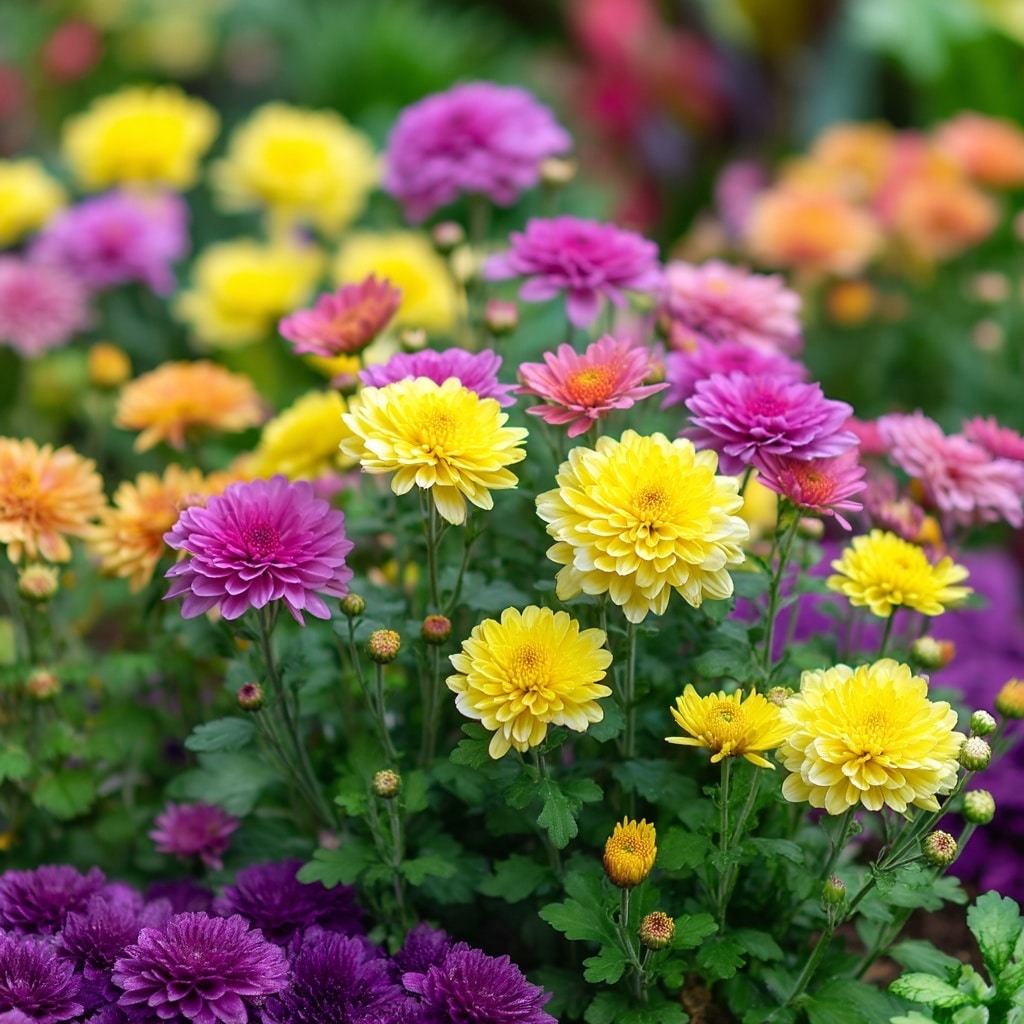Daisy lovers know there’s something irresistibly cheerful about those sunny blooms with bright centers and neat petals. But did you know there are dozens of flowers that mimic the daisy’s classic look—often with even more color, texture, or garden versatility?
Whether you’re filling a cottage garden, adding pollinator favorites, or just want that unmistakable daisy charm without sticking to the traditional white and yellow, there’s a world of options.
In this guide, we’ll introduce 18 stunning flowers that echo the daisy vibe—each offering its own twist on the look you love. From hardy perennials to sun-loving succulents, these daisy alternatives bring year-round beauty and joy to any garden space.
Table of Contents
1. Mums (Chrysanthemums)
Mums are among the most popular fall-blooming perennials, and many varieties closely resemble a daisy in structure and style. With their symmetrical petals and vibrant yellow centers, they bring a cheerful pop to garden beds and containers alike.
Available in a wide spectrum of colors — from snow white and pastel pink to fiery orange and deep burgundy — mums are both hardy and versatile. They thrive in full sun and well-draining soil, often blooming from late summer into early frost.
These daisy lookalikes are ideal for gardeners who want long-lasting blooms with minimal fuss.
Purple Coneflower (Echinacea)

If you love bold color and pollinator action, purple coneflowers are a must. With their raised central cones and layered petals, they closely mirror the shape of a daisy while adding vertical interest to your beds.
Native to North America, these hardy perennials attract bees and butterflies and can handle drought once established. Their vibrant magenta-to-purple tones make them stand out against green foliage and softer blooms.
They’re especially useful in naturalistic, prairie-style, or pollinator gardens that still want a daisy-like aesthetic
3. Blanket Flower (Gaillardia)
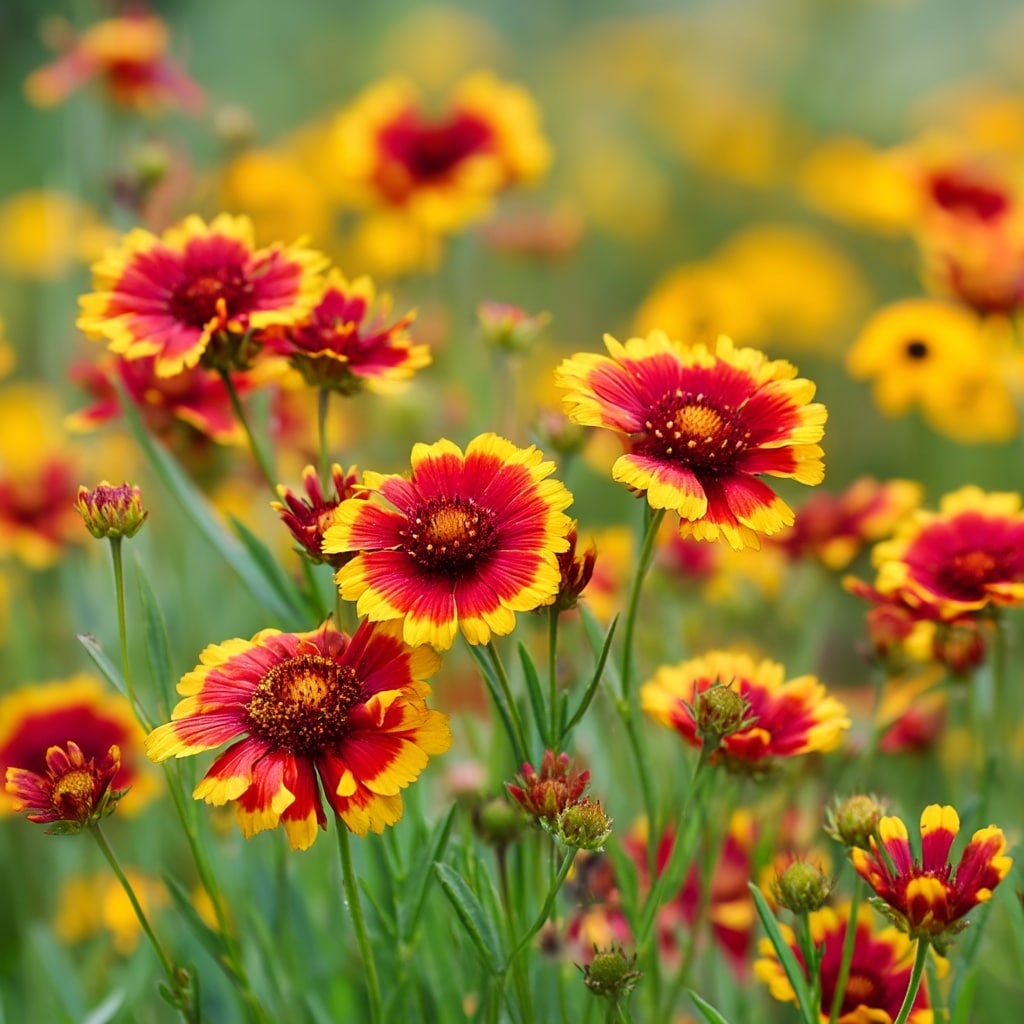
Blanket flowers are daisy-shaped perennials that wear a fiery color palette of red, orange, and gold. Their fringed petals and circular centers bring warmth and movement to the garden, resembling wild, sunlit daisy clusters.
These tough plants love dry, sandy soil and full sun, making them ideal for hot, arid climates or low-maintenance beds. Plus, their nectar-rich blooms are butterfly magnets.
For gardeners looking for a more rustic or desert-inspired take on the classic daisy, Gaillardia is a vibrant choice.
4. Sneezeweeds (Helenium)
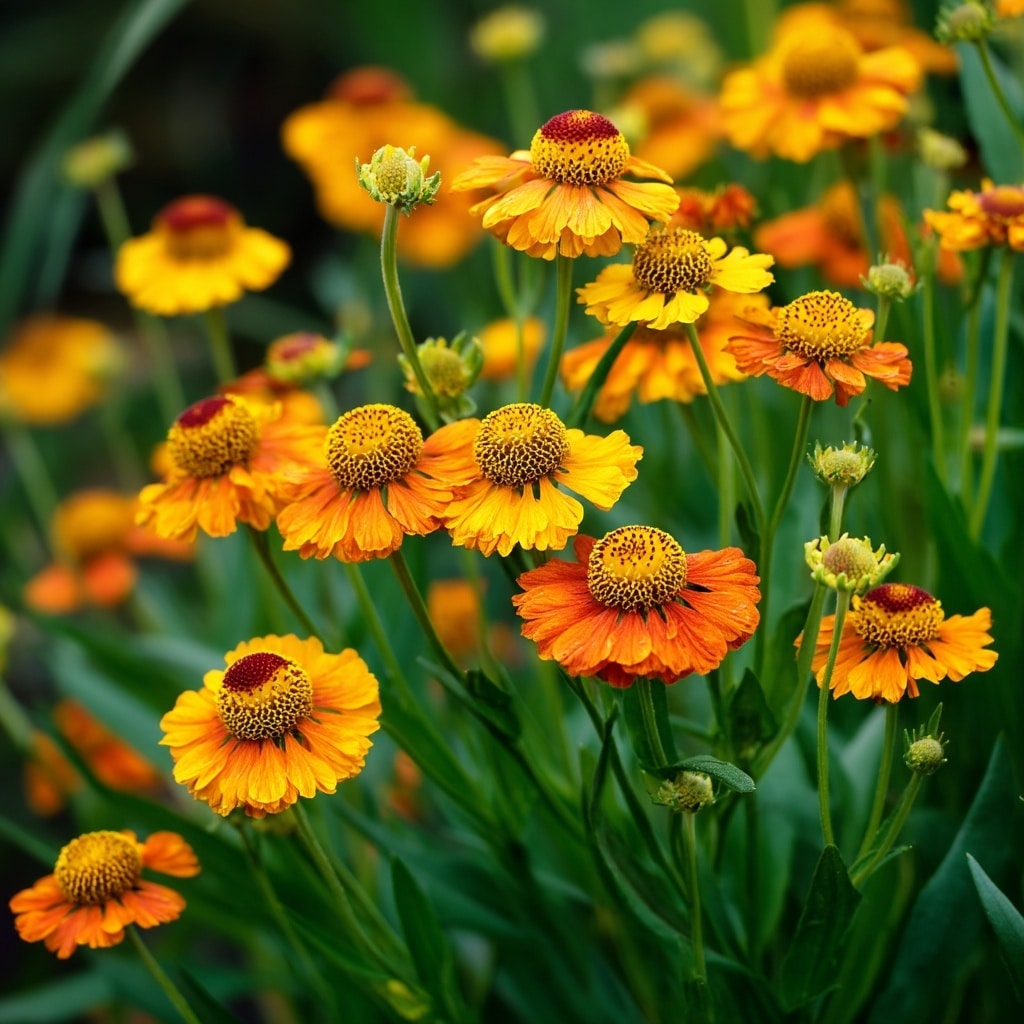
Despite their name, sneezeweeds are anything but irritating. These sunny perennials feature bright petals radiating from a prominent, domed center — much like a traditional daisy.
Often blooming in bold tones of yellow, orange, and red, sneezeweeds light up late-summer gardens and attract pollinators with ease. They prefer full sun and moist, well-drained soil, thriving in borders and wildflower meadows alike.
5. African Daisies (Osteospermum)

African daisies take the daisy aesthetic to dazzling new levels. Known for their vivid hues — from soft lavender and buttery yellow to bold purples and even bi-colored blooms — they’re true showstoppers.
These annual or tender perennials love sun and well-draining soil, making them perfect for containers, borders, or rock gardens. Their daisy-shaped petals often have a slight spooned or fringed effect, adding extra texture.
For gardeners seeking dramatic color with a familiar daisy shape, African daisies deliver both beauty and resilience.
6. Baby Sun Rose (Aptenia cordifolia)
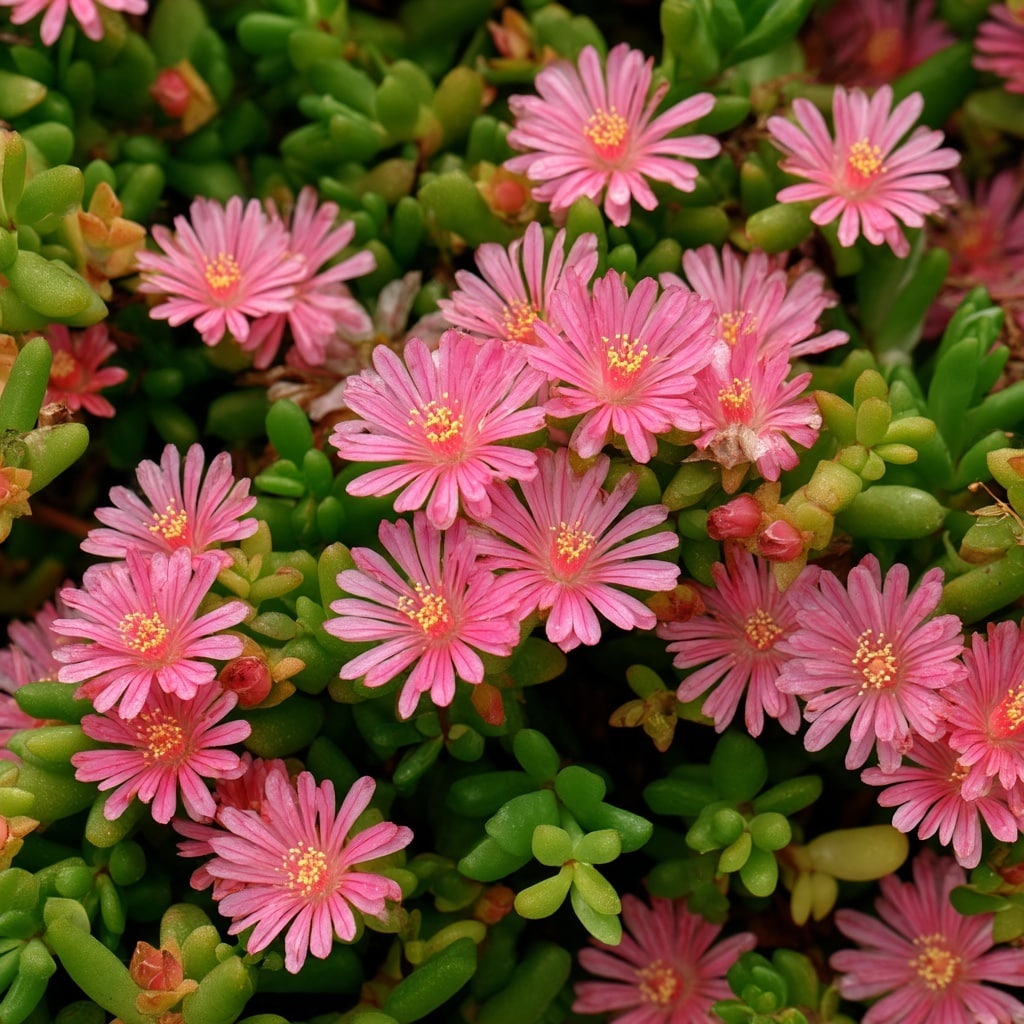
This charming succulent doesn’t just spread lush greenery — it also produces bright, pink daisy-like flowers. Baby sun rose is a fast-growing groundcover that thrives in warm climates and full sun.
Its tiny, shimmering blooms resemble miniature daisy heads, adding flashes of color against thick, heart-shaped leaves. Drought-tolerant and easy to grow, it’s a favorite in rock gardens, containers, or sunny slopes.
If you’re looking for a low-growing, heat-loving plant with daisy flair, this succulent is a stellar choice.
7. Trailing Iceplant (Delosperma cooperi)

Trailing iceplant brings a succulent twist to the daisy look. Its vibrant, daisy-like blooms cover the plant in a dense, mat-forming growth habit that spills beautifully over containers, walls, or rock beds.
Available in pink, purple, and magenta hues, these flowers bloom profusely in sunny conditions. The thick, fleshy leaves store water, making iceplant an excellent choice for drought-tolerant or xeriscape gardens.
It’s a low-maintenance favorite for those wanting bold daisy color with a modern, succulent vibe.
8. Scilly Daisy Bush (Argyranthemum frutescens)
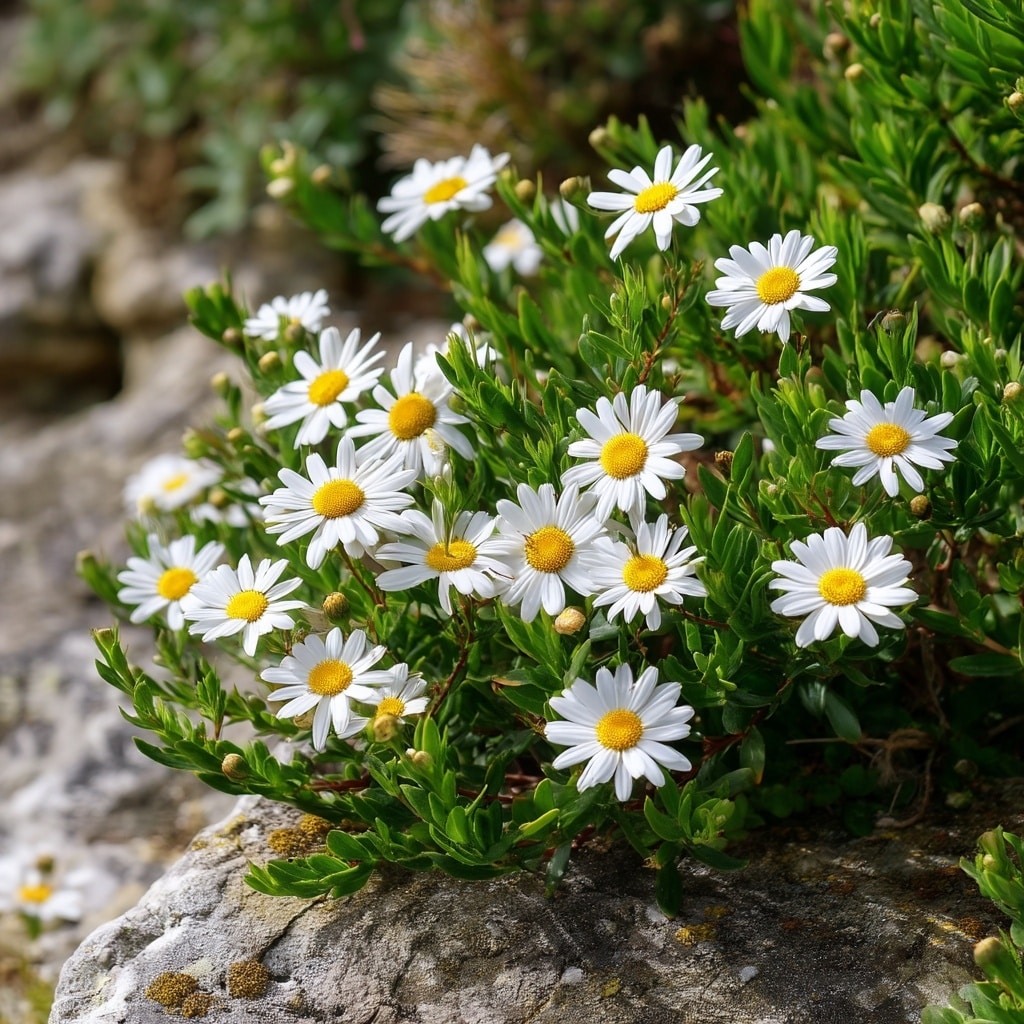
Native to the Isles of Scilly, this bushy perennial delivers waves of delicate white blooms with bright yellow centers — echoing the timeless look of a traditional daisy.
The Scilly daisy bush is salt- and wind-tolerant, making it ideal for coastal gardens. It thrives in full sun and blooms from spring through fall, often forming compact mounds that look neat and natural.
For seaside gardeners or anyone wanting a rugged yet pretty daisy lookalike, this plant is a winning option.
9. Engelmann Daisy (Engelmannia peristenia)

Engelmann daisies are true wildflower gems. These tough perennials produce golden-yellow blooms with soft, toothed petals that resemble wild daisy meadows.
Thriving in dry, sunny conditions, they’re drought-tolerant, low-maintenance, and excellent for native or prairie gardens. They can even grow in poor soils and still bring a cheerful presence throughout spring and summer.
If you’re looking for a classic daisy silhouette with Texas-hardy roots, Engelmann daisy checks all the boxes.
10. Painted Daisy (Tanacetum coccineum)
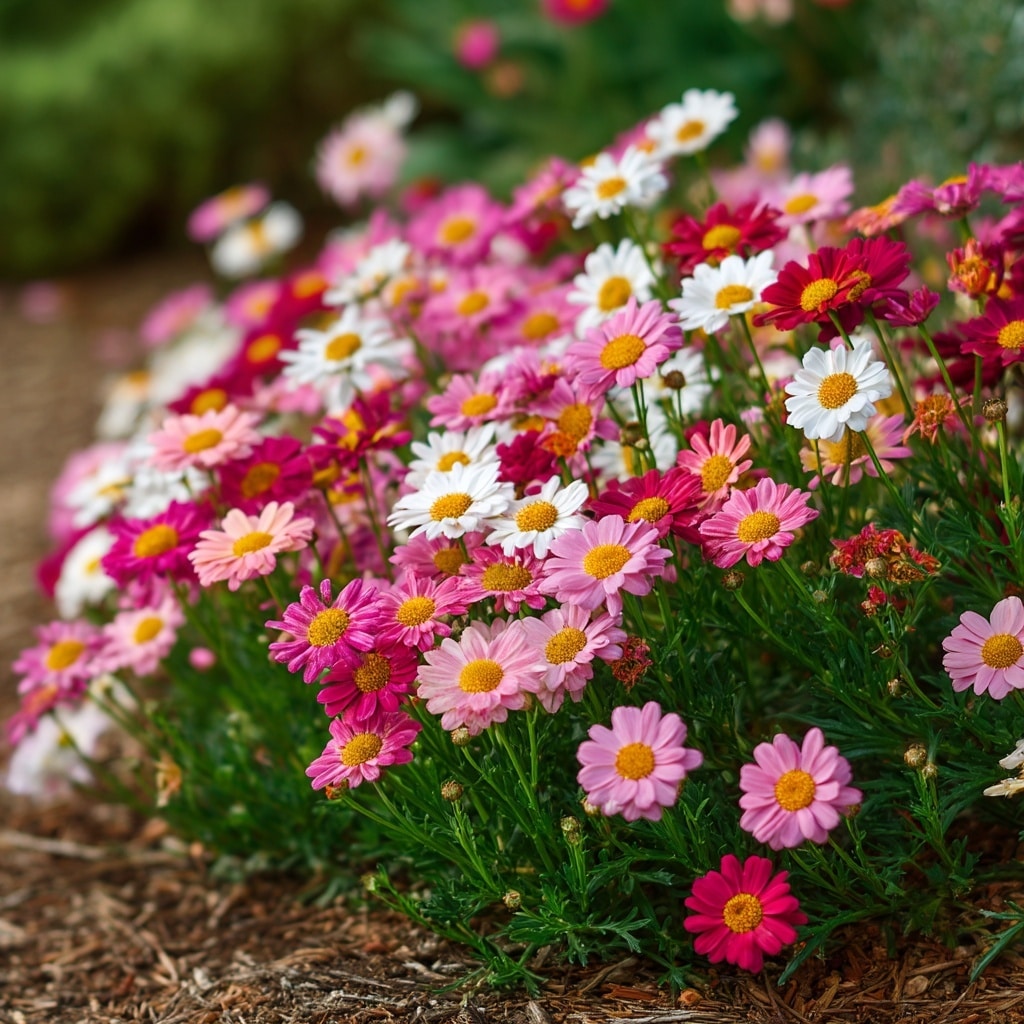
Painted daisies are a vibrant twist on the classic daisy form. Their colorful petals — ranging from deep pinks and reds to white — surround a golden yellow center that instantly brightens garden beds.
Besides their looks, painted daisies are known for their natural pest-repelling qualities, thanks to the compound pyrethrum in their foliage. They thrive in full sun and well-drained soil, blooming from late spring into early summer.
These daisy-like flowers combine beauty with built-in protection for your garden.
11. Aylostera Heliosa
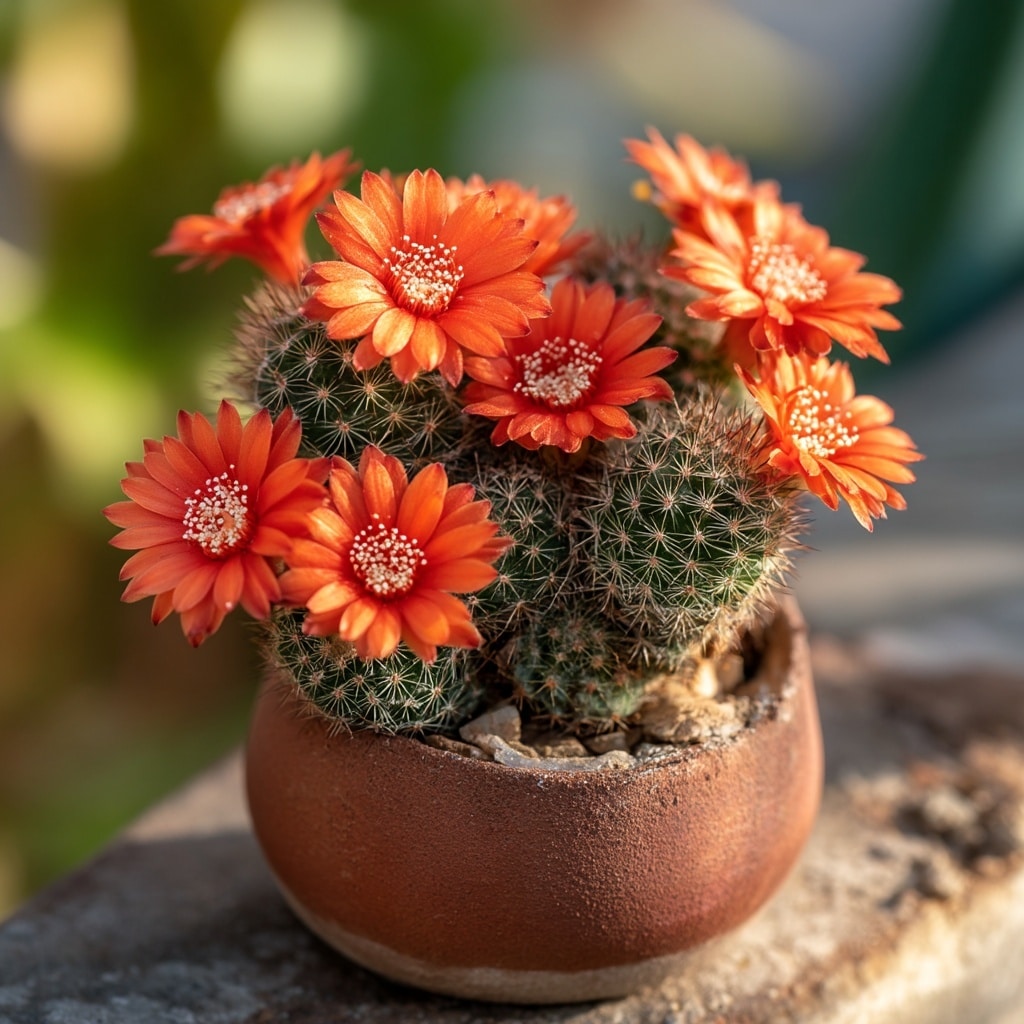
This small cactus might surprise you with its brilliant daisy-shaped blooms. Aylostera heliosa, native to Bolivia, produces bright orange-red flowers that burst from tiny, clustered cactus pads — creating an unexpected yet striking daisy effect.
It thrives in dry, sunny spots or even indoors on a bright windowsill. Despite its spiny base, the contrast of vibrant blooms and neat form makes it a standout among low-maintenance daisy-style plants.
Perfect for succulent lovers who still want that floral daisy energy.
12. Zinnia
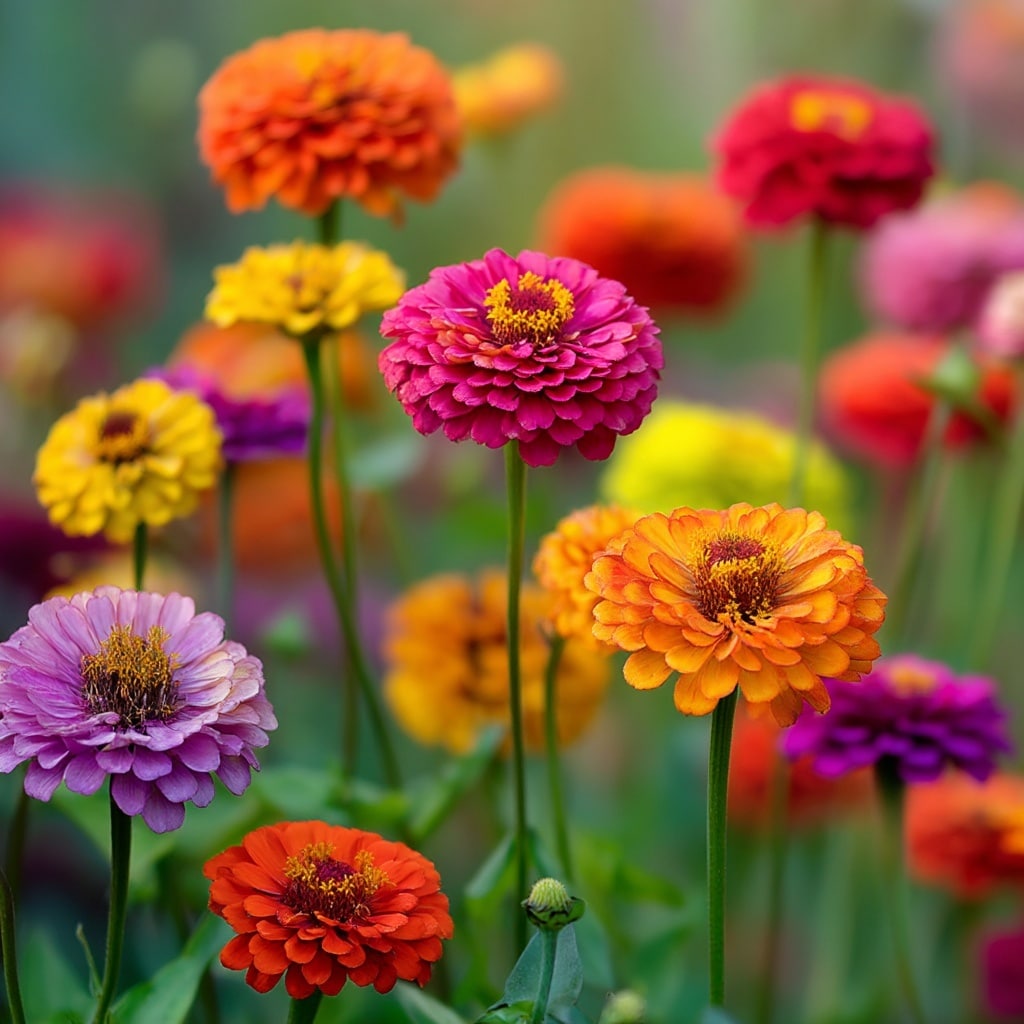
Zinnias are among the easiest annuals to grow, and many varieties showcase a strong resemblance to traditional daisy blooms — especially the single-petal types with bright centers and circular symmetry.
They’re available in nearly every color imaginable, from bold purples to sunshine yellow. Zinnias bloom continuously from summer through fall, thriving in full sun and well-drained soil.
Ideal for borders, butterfly gardens, or cutting gardens, zinnias offer classic daisy charm with bonus versatility and vibrant flair.
13. Compass Plant (Silphium laciniatum)
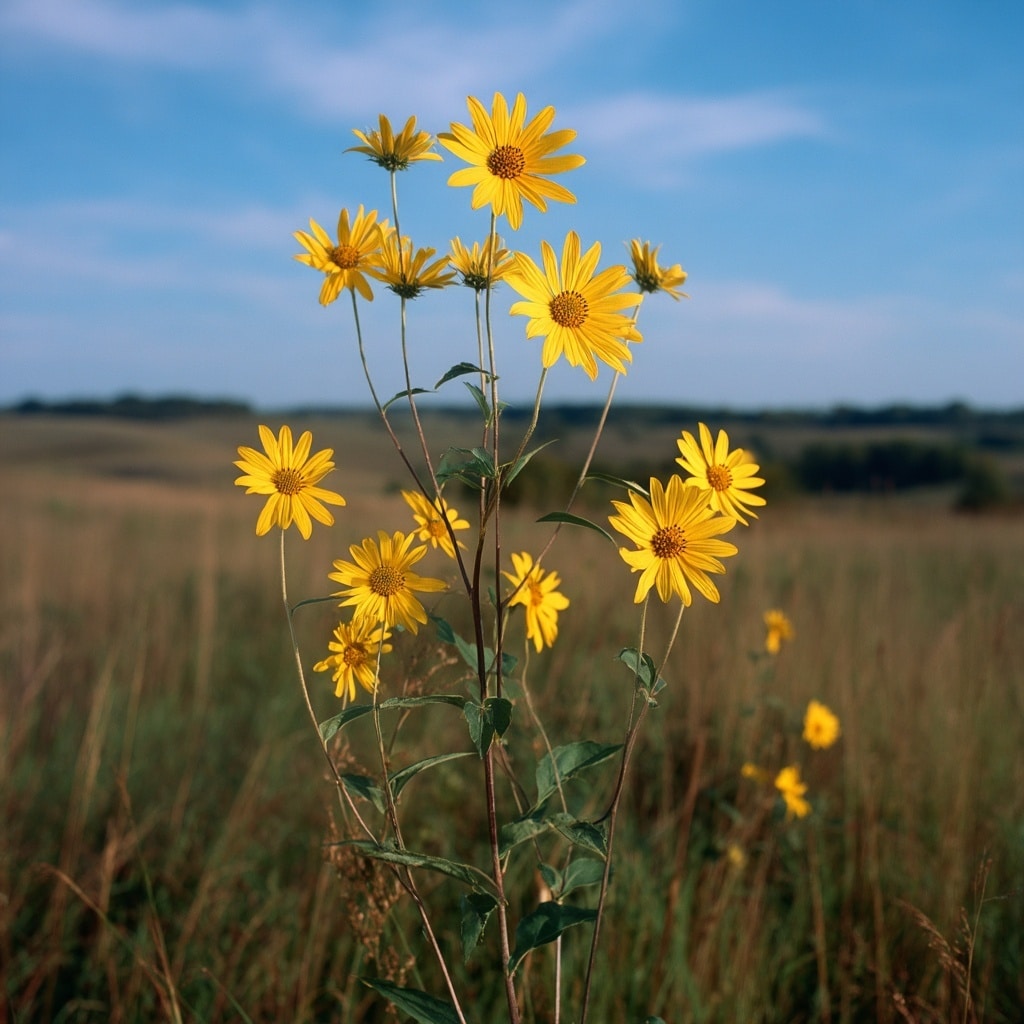
The compass plant is a towering prairie native that showcases large, bright yellow blooms with a familiar daisy form. Its petals radiate from a bold central disk, and the plant can grow up to 12 feet tall, making it a bold architectural element in natural gardens.
Its name comes from the leaves, which often align north-south to reduce sun exposure — a fascinating feature for plant enthusiasts.
Perfect for large spaces, pollinator gardens, or wildflower meadows, the compass plant adds a wild, whimsical daisy vibe on a big scale.
14. Seaside Daisy (Erigeron glaucus)
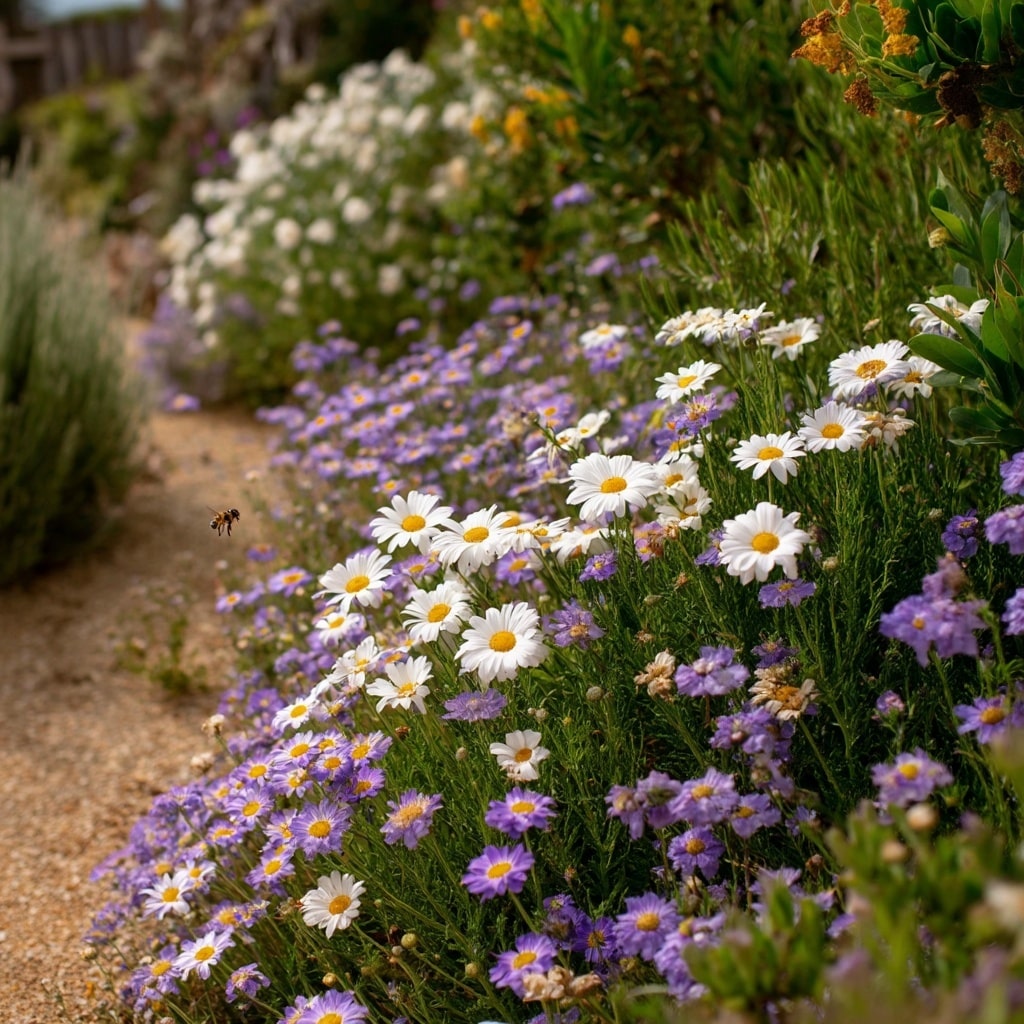
Seaside daisies are ideal for coastal and low-maintenance gardens. These low-growing perennials form clusters of purple, pink, or white daisy-like blooms with golden centers.
Tolerant of salty air, poor soil, and strong winds, they thrive in tough environments while still offering delicate, classic daisy appeal. Their blooms attract bees and butterflies and require very little upkeep.
If you want a true daisy lookalike that’s tough as nails, this beachy bloomer is it.
15. Marigold (Tagetes)

Though technically not a daisy, marigolds often mimic the sunny disposition and round, radiating shape that makes daisy flowers so beloved.
With bright orange, yellow, and red tones, marigolds add bold color to any bed or container. They’re also famous for deterring garden pests and thriving in a wide range of soil conditions.
Hardy, cheerful, and useful, marigolds bring daisy energy with extra resilience — a must-have in practical, beautiful gardens.
16. Cineraria (Pericallis × hybrida)
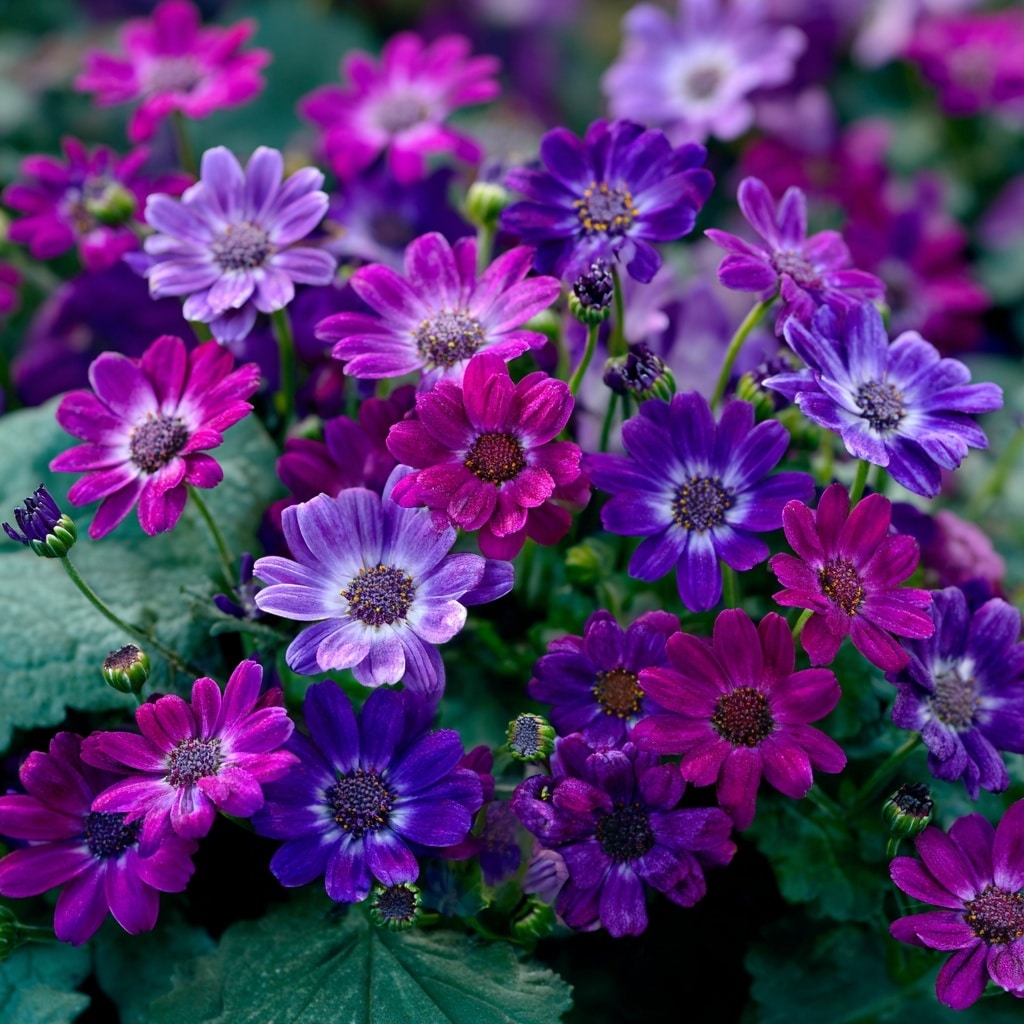
Cinerarias are bursting with color and daisy-shaped elegance. Their vivid blooms come in brilliant shades of violet, blue, pink, and white — often with contrasting centers that enhance their visual impact.
These cool-weather annuals thrive in partial shade and rich, moist soil. While they don’t handle heat well, they’re perfect for early spring color in containers, shaded borders, or indoor pots.
For gardeners who love a classic daisy look but crave more vibrant hues, cineraria is a seasonal standout.
17. Leopard’s Bane (Doronicum orientale)

Leopard’s bane is one of the first perennials to bloom in early spring, often bringing much-needed color when most of the garden is still asleep. Its bright yellow blooms closely resemble classic daisy flowers, with round petals and cheerful centers.
This plant prefers cooler temperatures and partial shade, making it ideal for woodland borders or shaded beds.
Leopard’s bane offers the fresh, optimistic feel of a daisy, especially where other sun-loving blooms won’t grow.
18. Ligularia

Ligularia brings bold foliage and daisy-like flowers together in one striking plant. With tall stems and golden yellow blooms, it creates a sunny effect even in shady, damp corners of the garden.
Unlike traditional daisy plants, ligularia prefers rich, moist soil and protection from harsh afternoon sun. Its dramatic leaves and upright flower spikes make it perfect for shaded garden drama.
If you’re looking for a daisy alternative that thrives where others struggle, ligularia is your secret weapon.
Conclusion
When you think of a daisy, you’re picturing simplicity, sunshine, and a flower that never fails to lift the mood. But as you’ve seen, the garden is full of beautiful blooms that echo the daisy’s charm — some even with added resilience, bold color, or unique growing habits.
Whether you’re crafting a wildflower haven, filling shady corners, or building a vibrant low-maintenance bed, there’s a daisy-like flower to suit your needs. From tough prairie plants to colorful spring stars, these 18 options offer all the cheer of a classic daisy, with plenty of personality to spare.
Plant a few of these lookalikes and let your garden radiate daisy energy all season long.


